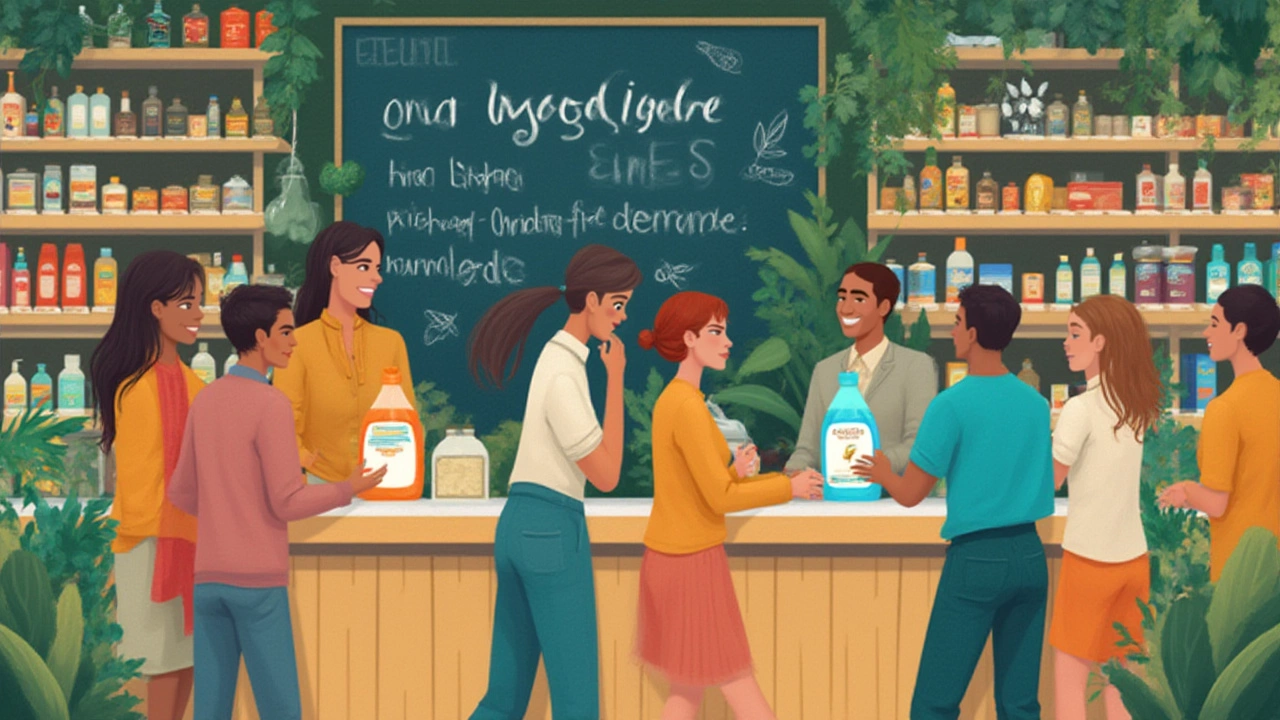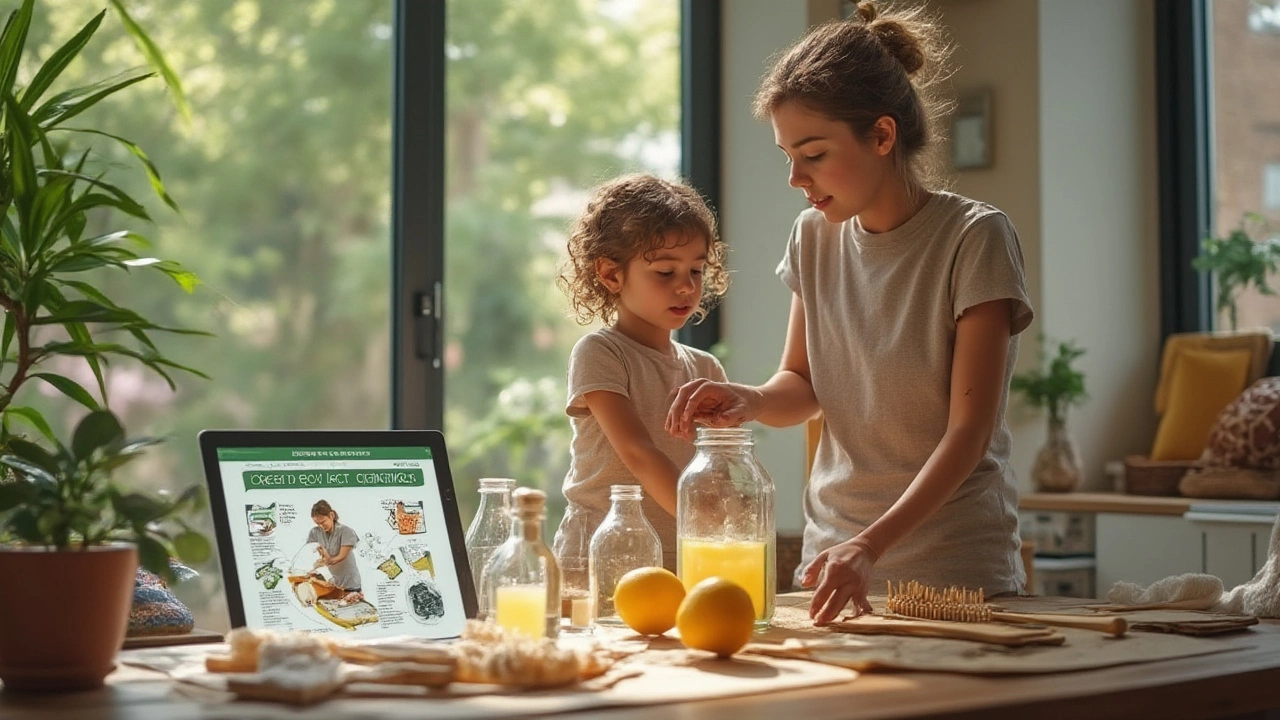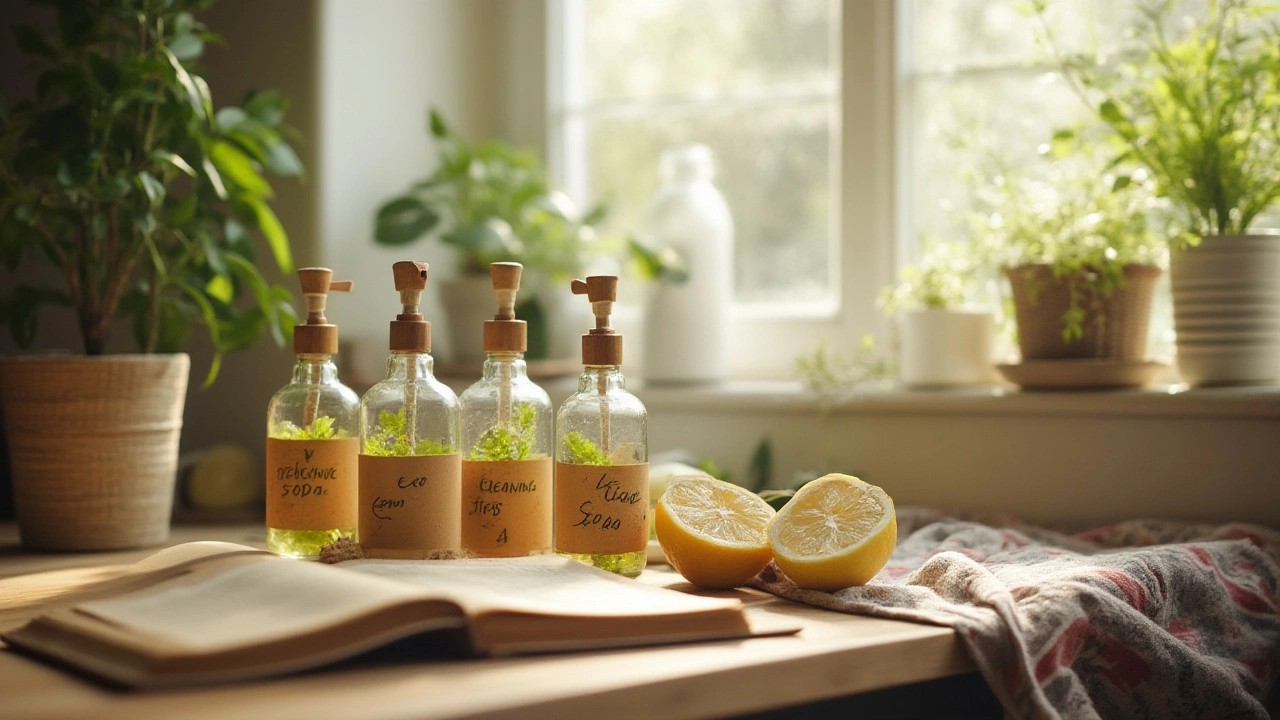Ever heard of the phrase “just because it smells fresh, doesn’t mean it’s clean—or green”? Loads of people think that cleaners labeled with a green leaf or some earthy color must be kind to the planet. But labels only tell part of the story (if they tell the story at all). Most folks don’t know that up to a third of so-called eco-friendly cleaners on store shelves aren’t much better for the environment than the harsh stuff they claim to replace. The difference between actually green cleaning products and the fake ones can come down to a single hidden chemical, or the way something gets packaged. So what counts as a real environmentally friendly cleaner? Grab a coffee and take a minute—let’s actually figure it out.
What Really Goes Into an Environmentally Friendly Cleaner?
This is where it gets interesting. A truly eco-friendly cleaner is built on three things: the ingredients, how the product breaks down after use, and the impact from the factory all the way to your cupboard. Marketing can be tricky—words like “natural” or “green” actually mean nothing in legal terms. For example, coconut oil is great in a cleaner, but if it’s harvested from an endangered forest with old, gas-chugging tractors, that “natural” label loses its shine.
The big thing to look for is biodegradability. The Environmental Protection Agency (EPA) in the US says a product should break down into harmless parts within 28 days after hitting water or soil. If it lingers longer, it can upset wildlife, pollute streams, and even get into our own drinking water supplies. Simple ingredients win: vinegar, baking soda, citric acid, and plain soap all disappear quickly and don’t leave worrisome stuff behind.
On the other hand, plenty of mainstream cleaners contain things like ammonia, sodium hypochlorite (bleach), or quaternary ammonium compounds. These stick around much longer in the environment, sometimes for months, and can seriously hurt aquatic life. Even “green” cleaners sometimes sneak these in—one study out of the University of Washington found that 91% of analyzed air fresheners and cleaning products (yes, including those labeled ‘all-natural’) released chemicals known to cause allergic reactions.
Pay attention to labels like “fragrance” too—it usually hides a laundry list of chemicals (often more than 50) the company doesn’t have to spell out. If you can’t pronounce an ingredient or it doesn’t say specifically what’s inside, that should raise a red flag. Reliable third-party seals can help. Certifications like EPA Safer Choice, EU Ecolabel, or even Green Seal actually require companies to show lab data that backs up their claims. No greenwashing allowed with those.
- Tip: If you’re ever in doubt, check the product on EWG’s Guide to Healthy Cleaning. They dig up info on most things you’ll find at big box stores.
- Good sign: The ingredient list is short, specific (things like "sodium bicarbonate" or "plant-derived surfactant"), and doesn’t hide behind “proprietary blend”.
- Bad sign: Words like “antimicrobial” unless absolutely needed—these usually mean heavy-duty chemicals.
If you want to see how these ingredients stack up:
| Ingredient | Breakdown Time | Environmental Impact |
|---|---|---|
| Vinegar | Less than 28 days | Minimal, non-toxic |
| Sodium Hypochlorite (Bleach) | Over 100 days | Can form toxic byproducts |
| Coconut Surfactant | About 21 days | Low, if responsibly sourced |
| Quaternary Ammonium Compounds | More than 60 days | Toxic to aquatic life |
Before grabbing that bottle, check these details. It could make a much bigger difference than you think.

Why Packaging and Manufacturing Matter as Much as Ingredients
Here’s something nobody tells you: a “green” cleaner in a plastic jug shipped halfway across the world often does more harm than locally bottled stuff with basic ingredients. Packaging and production aren’t just background noise; they’re a huge slice of a cleaner’s environmental pie. According to a 2023 study by the Ellen MacArthur Foundation, over 25% of the life-cycle carbon footprint of household cleaners comes from packaging—alone. That means even if the foamy stuff inside is harmless, the container can blow your eco-friendly dreams to pieces.
Refillable bottles, concentrates, and even tablet-based cleaners are game changers. They slash single-use plastic waste and make a noticeable cut in the greenhouse gas emissions needed to make and haul the stuff to your door. Take Blueland’s tablets; they reduced plastic bottle use by millions in just a year simply by letting people reuse their cleaning bottles. Some local shops in London or New York run refill stations where you bring empty bottles—they’re probably worth the trip if you really care about your impact.
But why stop with the bottle? Check if the manufacturer gets their raw materials sustainably. Palm oil, for example, pops up in loads of cleaners—eco-friendly or not—and unless it’s certified (like RSPO, Roundtable on Sustainable Palm Oil), it probably comes from areas where rainforests are destroyed. Also, how a company deals with wastewater and emissions matters. Some cleaning brands treat every drop before it leaves their factory, so nothing nasty slides into rivers. Others—especially generic brands—skip this step because it’s cheaper, but then local fish and frogs pay the price.
- Look for “100% post-consumer recycled plastic” or “plastic-free” on bottles.
- Concentrated cleaners are usually better: they cut packaging by up to 80% and reduce shipping costs (and emissions) by a ton.
- Some companies publish full environmental reports—these tend to be more honest than those that don’t say anything beyond “eco-friendly”.
- If a company supports take-back programs or bottle recycling, that’s a big plus.
Interestingly, even laundry detergent sheets (those things you peel and toss in with your clothes) often use way less packaging. Plus, you won’t spill sticky liquid everywhere—speaking from personal experience, Isla’s and my kitchen cabinets have seen too many sticky messes. Cleaning up after your green cleaner kind of defeats the purpose.
Here’s a quick look at how packaging choices compare when it comes to carbon emissions:
| Packaging Type | Average CO2 Produced (per unit) | Reusable? |
|---|---|---|
| Single-use plastic bottle (750 ml) | 95g | No |
| 100% recycled plastic bottle | 48g | Yes/No |
| Refillable glass bottle | 36g | Yes |
| Tablet/strip packet (compostable) | 4g | N/A |
The less “stuff” you bring home, the better—both for your wallet and the planet.

Everyday Tips for Picking (or Making) Genuinely Eco-Friendly Cleaners
Let’s talk action. It’s one thing to know all the science and stats, but it only matters if you use it. Sifting through the sea of labels and options is a chore, so here’s what I’ve learned after lots of label reading and some trial-and-error that once left the kitchen smelling like salad dressing (turns out, pure vinegar by itself is a bold scent choice).
- Read ingredient lists like you read a food label. If it’s a mouthful of long, coded words and “proprietary blend” is the excuse, keep searching. Look for short, simple, plant-derived ingredients.
- Check for reputable third-party certifications. If you see “EPA Safer Choice” or “Green Seal,” those products have had to prove they’re less harmful for humans and nature.
- When in doubt, make your own. A basic all-purpose spray is just vinegar, water, and lemon peel. Add a few drops of natural essential oil if the vinegar smell is too much. For scrubbing, plain baking soda has been used for ages—my gran swore by it and her sink shined longer than anyone else’s.
- Buy concentrates instead of big bottles. You’ll use less packaging, and these are much easier to store—especially if your cleaning cupboard looks like mine after spring cleaning.
- Skip antibacterial cleaners unless you truly need them, like during a stomach bug outbreak. Day-to-day, soap and water cut germs just fine without risky chemicals.
- Choose products from brands transparent about sourcing and manufacturing. Listen for silence on these points—it usually means there’s something to hide.
- If possible, support upcycled or package-free shops near you. Bring your own bottles—yes, the cashier might roll their eyes, but you’ll save on plastic and feel a bit smug in a good way.
- Small tip but huge impact: share your findings. Most folks just want a cleaner house, not a chemistry degree—helping friends or family spot a fake “green” cleaner saves headaches all around.
Still unsure? Here’s a list of safe DIY recipes proven to work—no hidden grime, and your pipes and pets will thank you:
- All-purpose spray: 1 cup vinegar, 1 cup water, 2-3 lemon peels, let sit overnight.
- Scrub paste: 3 parts baking soda, 1 part water. Add a dash of salt for extra boost.
- Glass cleaner: 2 cups water, 1/2 cup vinegar, 1 tablespoon cornstarch. Shake well, spray and wipe.
- Stain remover: 2 tablespoons hydrogen peroxide (3%), 1 tablespoon baking soda. Use with care, spot-test first.
One common worry: does “green” really mean less cleaning power? Tons of lab tests say yes—just check Consumer Reports or Which?. Proper eco-cleaners scrub away dirt, grease, and bacteria almost as well as the hard stuff, unless you’re dealing with industrial mess or highly infectious diseases. For 95% of homes, the green stuff works—without turning your sink into a chemistry experiment gone wrong.
Adopting eco-friendly cleaning is not about aiming for perfect zero-waste, off-grid living. It starts with swapping out just one bottle. Chances are you’ll never go back. If you’re like me and Isla, our dog Winston doesn’t miss the overpowering smell of bleach one bit—and the air in our house seems a little lighter, even when the windows are shut. It’s cleaner in every sense: for you, your family, and the big crazy planet we all share.
